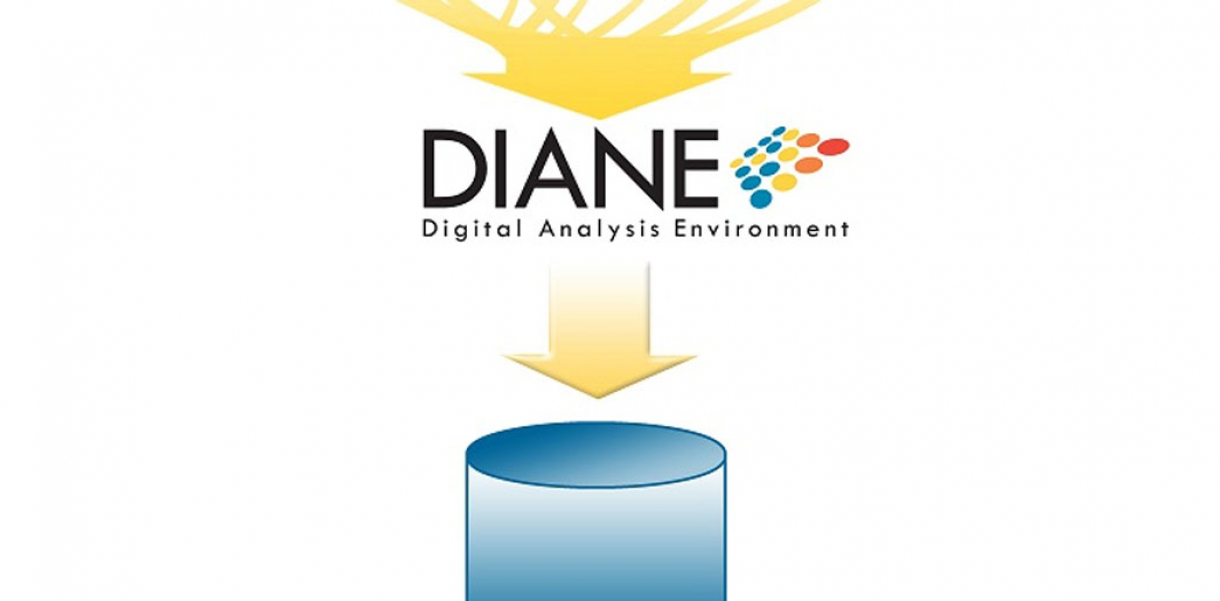Functionality and use of design
DIANE is enabled through a secured, rich interactive Web environment. The functionalities are:
- Collection/Storage- automatically monitors thousands of selected web sites on a 24/7 basis and stores them
- Extraction/Analysis – automatically: clusters records in 3-D space around common ideas, identifies relationships; helps to develop ontologies and taxonomies.
- Display- unusually rich and novel information displays
How did this design improve life?
DIANE is both a synergistic collection of tools that empower the analytical process in extraordinary new ways as well as an engine for exposing knowledge that is locked in large amounts of highly dynamic information. DIANE’s unique combination of individual components is orchestrated through its Integration Engine.
- DIANE allows the deep, seamless interaction of human sense-making processes with powerful computer analytical capabilities
- It is used to identify new patterns and relationships in unstructured information.
- It is an innovative information and knowledge planning system
- It enables organizations enterprise-wide to anticipate futures rather than respond to events.
- It provides breakthrough capabilities for identifying and monitoring early indicators of significant change.
- It enhances the ability of analysts to develop prescient and deep understandings of major potential and emerging events
- It brings together a variety of innovative components - some formerly used only for intelligence purposes and others not yet commercialized- to the public arena
DIANE represents the beginning of a revolution in the ability of the human species to start to develop tools to help themselves systematically look into the future and in so doing, respond before the fact to major potential events that are growing on our horizon.
Drawbacks of life improvement
DIANE is meant to be a tool that enhances the capabilities of humans- it is not meant to replace them. The tool is only as good as the people who use it and understand it. If the users misapply/misunderstand the objective of the tool, they could try to use it predicatively rather than in an analysis or anticipatory fashion. The system is also reliant on the data that it collects. If the data is not-credible or authentic, it will also skew the results of analysis. Another challenge that the users of the system must take into account is copyright and privacy. When information is being collected, the users must have permission to access and download it.
Like any other enabling tool or capability (like the Internet or money), DIANE can be applied to human-desired end, either constructive or destructive – or any combination.
Research and need
The Arlington Institute team used an “Agile Development” methodology, implemented as a sub-set of the core practices from XP (extreme programming).
The practices are tailored to the requirements of the customer and the team in order to provide high quality deliverables in a dynamic environment. These practices may include methods from more traditional software development methodologies, based on the risk and cost of components within the HSC.
The following principles are extracted from the Agile Manifesto:
- Our highest priority is to satisfy the customer through early and continuous delivery of valuable software.
- Welcome changing requirements even late in development. Agile processes harness change for the customer's competitive advantage.
- Deliver working software frequently, from a couple of weeks to a couple of months, with a preference to the shorter timescale.
- Business people and developers must work together daily throughout the project.
- Build projects around motivated individuals. Give them the environment and support they need as well as trust them to get the job done.
- Working software is the primary measure of progress.
- Agile processes promote sustainable development. The sponsors, developers, and users should be able to maintain a constant pace indefinitely.
- Continuous attention to technical excellence and good design enhances agility.
- Simplicity--the art of maximizing the amount of work not done--is essential.
- The best architectures, requirements, and designs emerge from self-organizing teams.
- At regular intervals, the team reflects on how to become more effective and then tunes and adjusts its behavior accordingly.
Designed by
John L. Petersen, Jin Zhu & Roger Barney - United States






